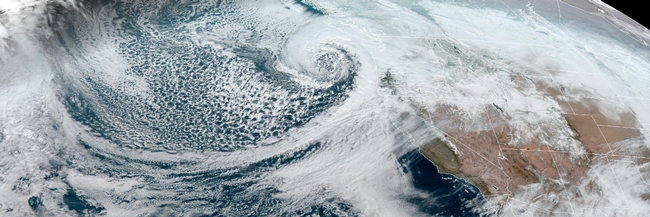Last month, the Thelma Hansen Fund hosted a three-day series to inform about climate change and the science behind it. In an effort to raise awareness of current and predicted impacts on Southern California, the impressive line up of UC speakers focused on the environment, agriculture, and disasters such as drought and fire.
If you missed the series or want to watch again, here is a brief overview and links to the recordings:
April 27
Climate change in California: A drier or wetter future—or…both?,
Dr. Daniel Swain, UCLA
Climate change has arrived in California, and scientific evidence linking the increasing severity of the region's recent droughts and wildfire seasons grows stronger with each passing year. But our warmer future may yet hold some surprises—and that includes the prospect of increasing "precipitation whiplash" that will increase the risk of both severe drought and extreme flood events.
UC Climate Stewards: Fostering resilience in California communities and ecosystems,
Sara-Mae Nelson, UC Climate Stewards Academic Coordinator
April 28
Climate Change Trends and Impacts on Agriculture in California and Ventura,
Dr. Tapan Pathak, UC Merced
Current and future trends in climate including temperature, precipitation, snowpack, extreme heat, frost risks etc. and how these trends could potentially impact agriculture in California and regionally in and around Ventura.
Heat, Wind, Freeze, Wind, Repeat, Dr. Ben Faber, UCCE-Ventura County
What is going on with the weather and what is the impact on farming? Coastal farming has enjoyed a fairly constant environment over the years, disrupted by the occasional freeze and the regular occurrence of devastating Santa Ana winds. Now, thrown into this pattern, are devastating heat waves which affect cropping patterns and cause significant crop damage and loss. What are these changes and consequences?
Overview of the Healthy Soils Program, Nicki Anderson, UCCE—Ventura County
What is the Healthy Soils Program and what has it accomplished so far? A look on how this program plans to continue working for California farms and farmers.
April 29
How can we address the growing wildland-urban interface problem in California?
Dr. Max Moritz, UCSB
With increasing area burned and homes lost in California, we must somehow adapt to, and coexist with, wildfire in the coming decades. A review of what we've learned about incorporating human development into future projections of wildfire and mitigation of losses, particularly as they relate to stronger land use and urban planning.
Fire and rangelands: impacts to Ventura County livestock agriculture,
Matthew Shapero—UCCE Ventura County
While the hills that surround our urban centers in Ventura County might appear from a distance as wild and uncultivated, many of them are in fact working cattle ranches. These are the lands that are most directly impacted by Ventura County's frequent wildfires. What is the history of wildfire in the county, what are the impacts to livestock agriculture, and how we plan to mitigate impacts in the future?
SAFER, Sustainable And FIRE Resistant Homes and Landscapes, Dr. Sabrina Drill—UCCE Ventura County
Creating safer landscapes in fire-prone areas starts at the home. How do you increase the likelihood of homes surviving fire at the structure and near-home landscaping scale.
